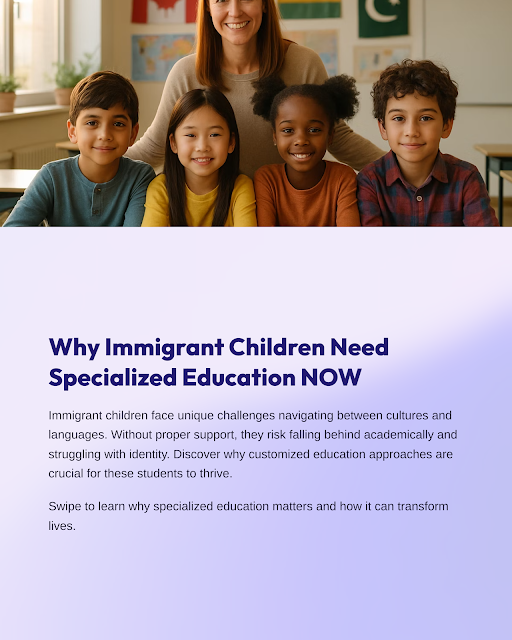Why Customized Education for Immigrant Children Matters Today
Children of immigrants often face unique challenges navigating new languages, unfamiliar school systems, and cultural differences. Tailored education programs are essential to close learning gaps and help them integrate successfully. In this article, we explore the reasons why customized education is not only important but urgent for immigrant students.
Language barriers are the first wall to overcome
Most immigrant children speak their native language at home and must learn the local language at school.
This often leads to difficulties in understanding lessons and absorbing new content.
Language-supportive programs do more than translate—they provide conceptual clarity and emotional stability.
Failing to overcome language barriers in early education often results in long-term academic underachievement.
Cultural differences affect learning attitudes and self-esteem
Educational norms vary by country. In some cultures, questioning teachers is encouraged, while in others, silence is a sign of respect.
Immigrant children often feel discouraged or misunderstood due to different communication styles.
Culturally responsive education helps foster self-esteem and encourages active learning through mutual respect.
Customized strategies are needed to bridge learning gaps
Immigrant students differ widely in prior schooling, academic levels, and language proficiency.
Treating them under one standard results in overlooked talents and disengagement.
Flexible, personalized curricula that reflect individual needs are essential.
| Category | Local Students | Immigrant Students |
|---|---|---|
| Language | Fluent or native | Often limited or emerging |
| Study Habits | Familiar with system | Affected by cultural norms |
| Goals | Easy to plan long-term | Higher dropout risk |
Fostering identity and belonging together
Many immigrant children struggle between cultural identities.
Tailored education supports their self-worth while fostering a sense of belonging in the new society.
Multicultural education and native-language support can build confidence and deeper social connections.
Teachers and systems must adapt, too
Educational reform must include teacher training and school system upgrades.
Teachers need tools and empathy to effectively support immigrant learners.
Schools must provide multilingual communication and cultural liaisons for parent engagement.
Long-term benefits: Social unity and economic growth
Customized education boosts individual academic success and supports national integration.
When immigrant children thrive, they become skilled contributors to the economy and promote diversity-driven innovation.
Global examples offer practical insights
Countries like Finland and Canada have successfully reduced learning disparities through inclusive language and cultural programs.
These models provide realistic, proven paths for other nations to follow.
| Country | Key Strategy | Outcome |
|---|---|---|
| Finland | Native language + local integration | Reduced gaps, higher morale |
| Canada | Multicultural ties and family outreach | Lower dropout rates |
| Germany | Early language focus, teacher training | Higher education access |
#immigranteducation #multiculturallearning #languagebarriers #customizedcurriculum #identitysupport #inclusiveeducation









댓글
댓글 쓰기